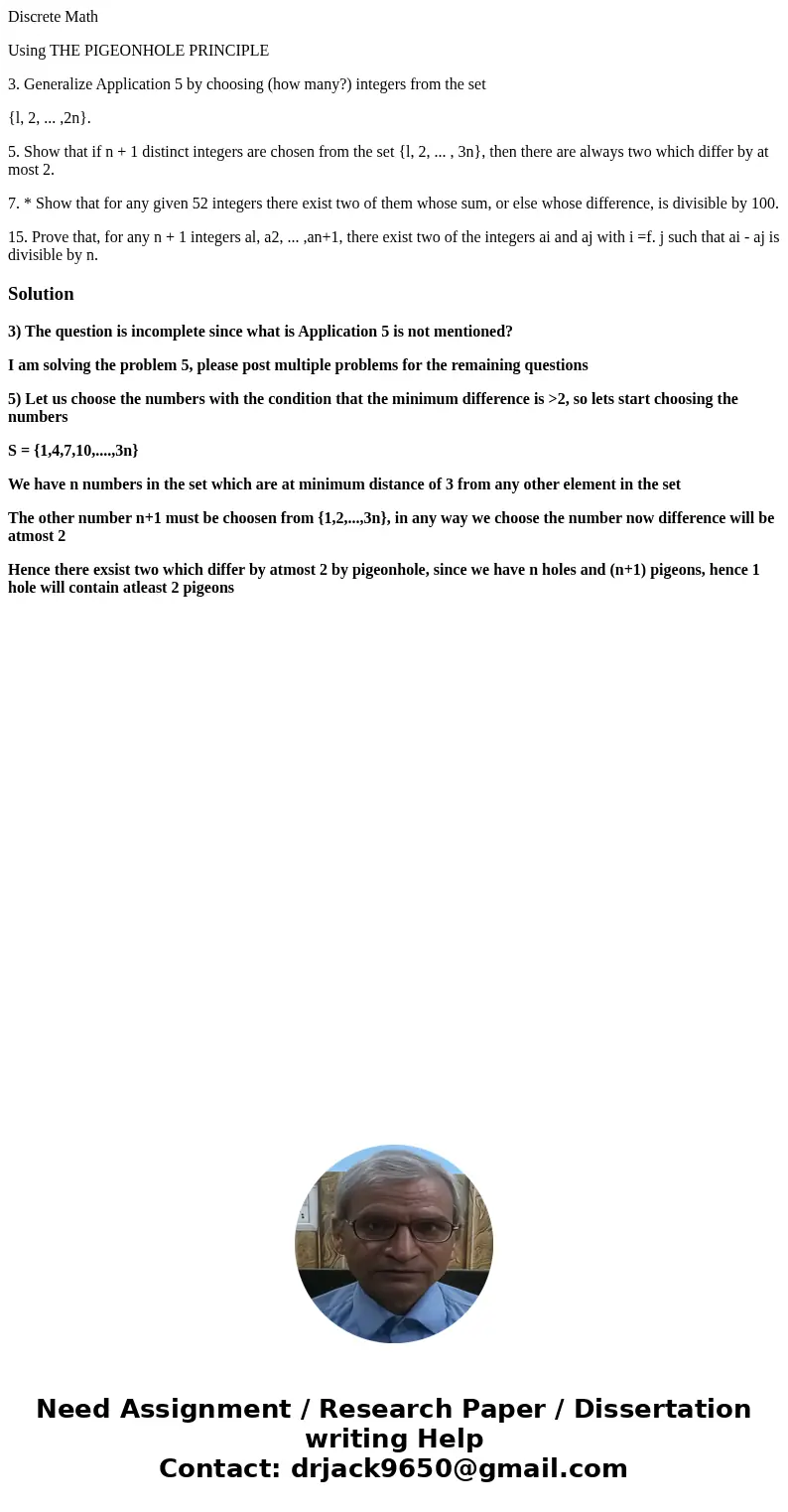Discrete Math Using THE PIGEONHOLE PRINCIPLE 3 Generalize Ap
Discrete Math
Using THE PIGEONHOLE PRINCIPLE
3. Generalize Application 5 by choosing (how many?) integers from the set
{l, 2, ... ,2n}.
5. Show that if n + 1 distinct integers are chosen from the set {l, 2, ... , 3n}, then there are always two which differ by at most 2.
7. * Show that for any given 52 integers there exist two of them whose sum, or else whose difference, is divisible by 100.
15. Prove that, for any n + 1 integers al, a2, ... ,an+1, there exist two of the integers ai and aj with i =f. j such that ai - aj is divisible by n.
Solution
3) The question is incomplete since what is Application 5 is not mentioned?
I am solving the problem 5, please post multiple problems for the remaining questions
5) Let us choose the numbers with the condition that the minimum difference is >2, so lets start choosing the numbers
S = {1,4,7,10,....,3n}
We have n numbers in the set which are at minimum distance of 3 from any other element in the set
The other number n+1 must be choosen from {1,2,...,3n}, in any way we choose the number now difference will be atmost 2
Hence there exsist two which differ by atmost 2 by pigeonhole, since we have n holes and (n+1) pigeons, hence 1 hole will contain atleast 2 pigeons

 Homework Sourse
Homework Sourse